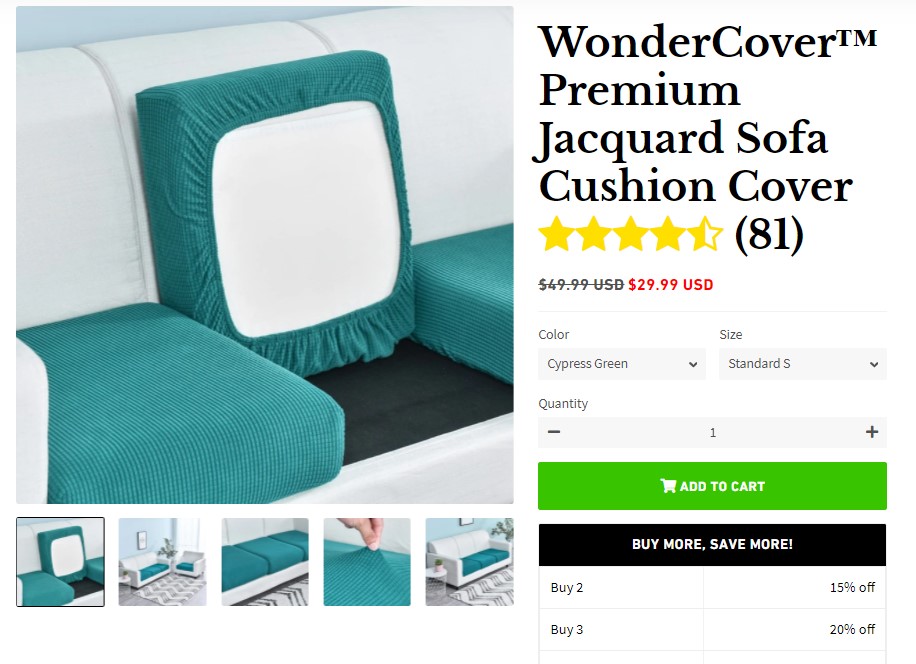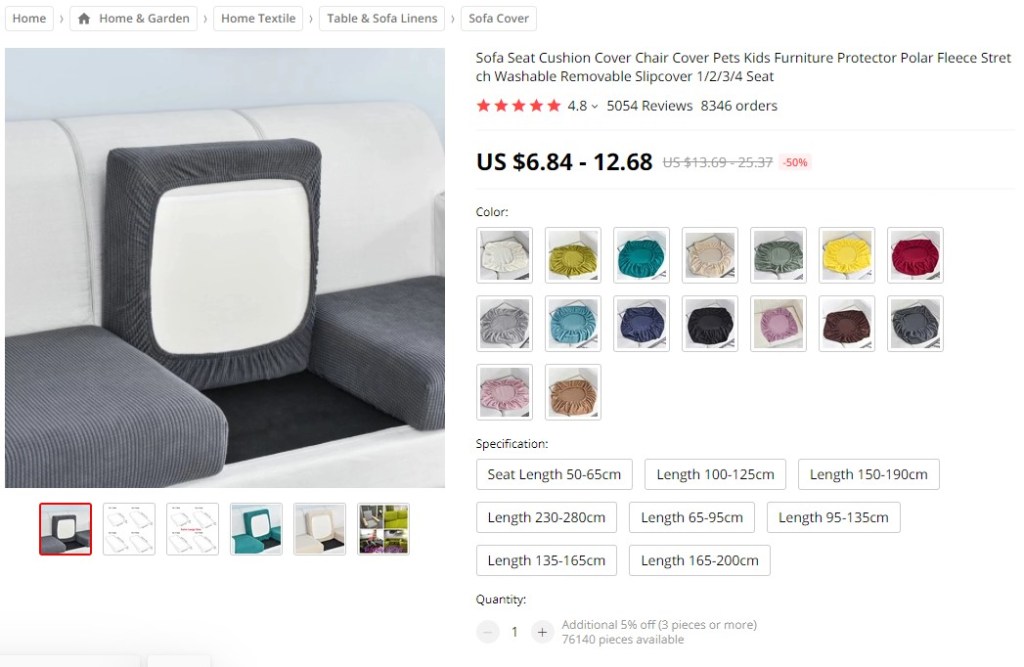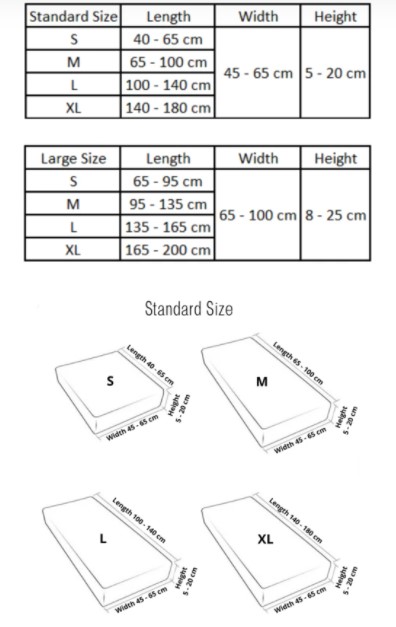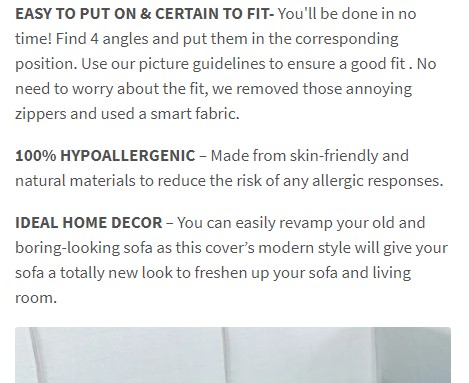WonderCover is a relatively new but profitable dropshipping store specializing in selling furniture covers.
Store and Product Breakdown
The store did a great job choosing a niche that not many dropshippers advertise on Facebook.

Here is a similar product on AliExpress for anyone interested.

But, it’s not our primary focus in this post. Here, we would like to point out some mistakes that WonderCover and many beginner dropshippers make when starting a dropshipping store.
The first one is not displaying size charts & measurements at all.
According to a study from Body Labs, 64% of the reasons why customers return products, especially clothing, is because of the wrong fit. Average online retailers also experience unexpected returns due to size issues. That’s why size guides are particularly important for eCommerce stores.
And, here is the second one. Looking at the below size measurement guide from WonderCover, can you spot what the mistake is?

There’s no doubt that it’s a clear and easy-to-understand size guide, and you should definitely employ a similar one for your eCommerce store. However, it lacks units of length in inch (in or ″) – the British Imperial and United States customary measurement systems.
The reason for this rather common mistake is that AliExpress is a Chinese eCommerce platform, which uses the metric system (m, cm, or mm) as the main method to calculate length. When importing products to stores, dropshippers often fail to pay attention to this element.
By neglecting the problem, you might end up losing British and US customers who are used to working with inch units for measurement.
For Shopify users, AVADA Size Chart is a great free app to implement beautiful size guides for your store (see a list of the best Shopify apps).
Key Takeaways
- Size guides are essential. Also, pay attention to units of measurement when advertising products globally.
Things to Improve
Another thing the store can improve is the product description.
WonderCover focuses too much on product features instead of clearly stating the benefits.

Although both are necessary, benefits are way more important to pivot around.
The main reason why features don’t sell is because customers don’t care about them. What they want are the benefits or the jobs the product can do for them. For example, Steve Jobs used the phrase “1000 Songs in Your Pocket” rather than “this product has 1GB hard drive” as the main slogan when promoting the original iPod.
As Theodore Levitt – a famous professor at the Harvard Business School – summarized this concept: “People don’t want to buy a quarter-inch drill. They want a quarter-inch hole!”
So instead of highlighting “100% HYPOALLERGENIC,” a better way is “Completely Safe For Your Skin, Even The Most Sensitive – Made from premium hypoallergenic materials that protect your skin…”
“IDEA HOME DECOR” is a benefit, but not clear enough. It might be more appealing this way: “Make Your Home Look Fresher Than Ever – Modern design with a wide variety of color, it’s sure to light up your room…”
Remember, benefits sell, features don’t.
The rightful owner of The Clever Business. I review & curate the leading suppliers so you don't waste time scouring the internet.




